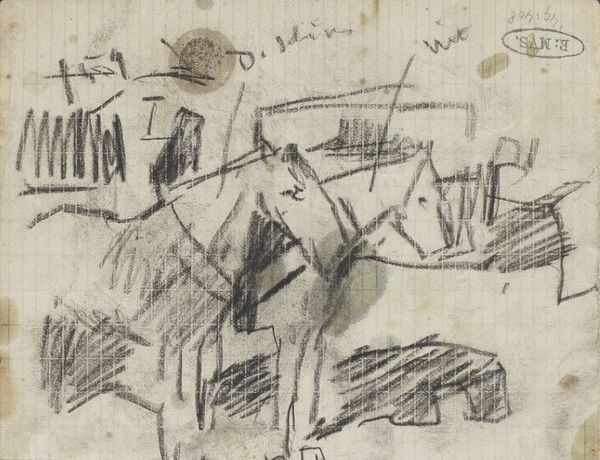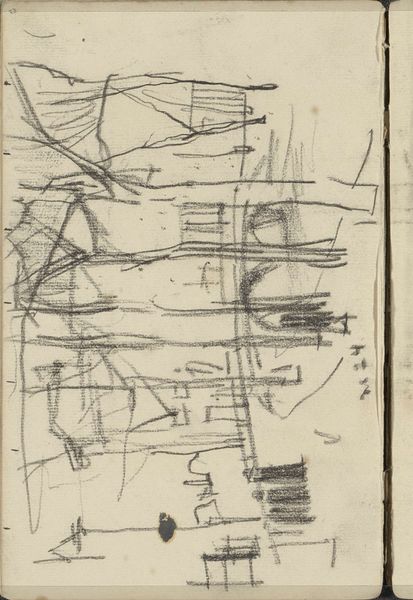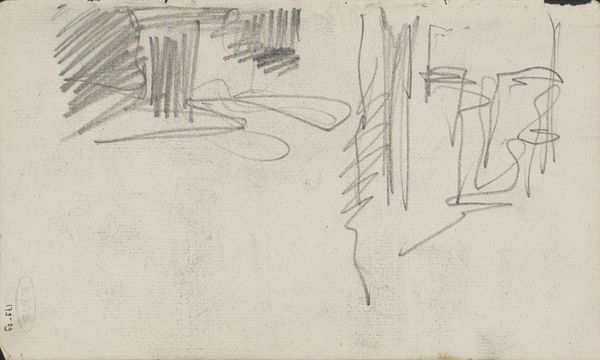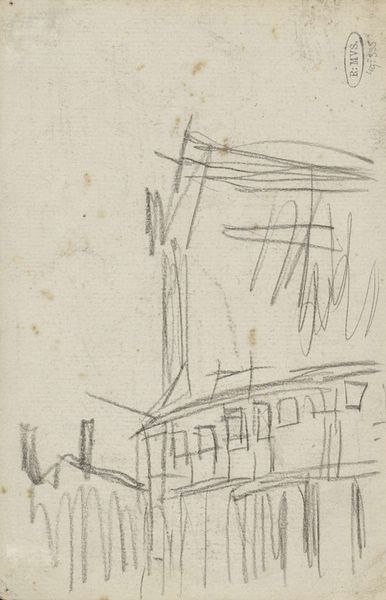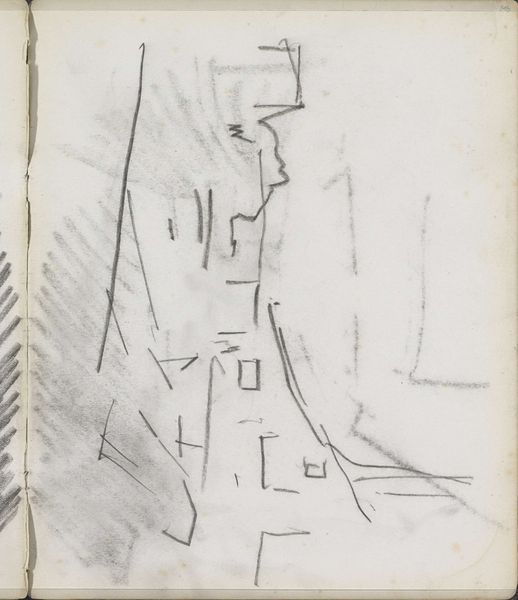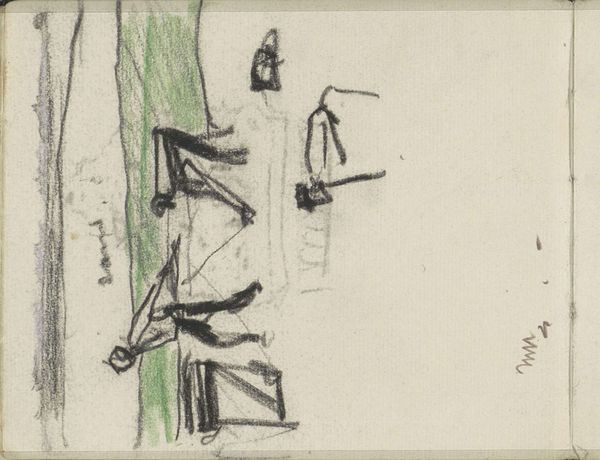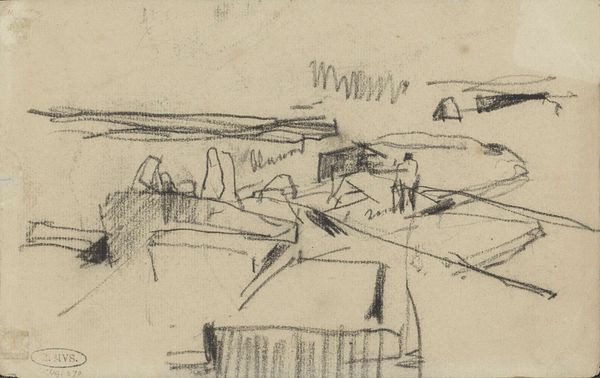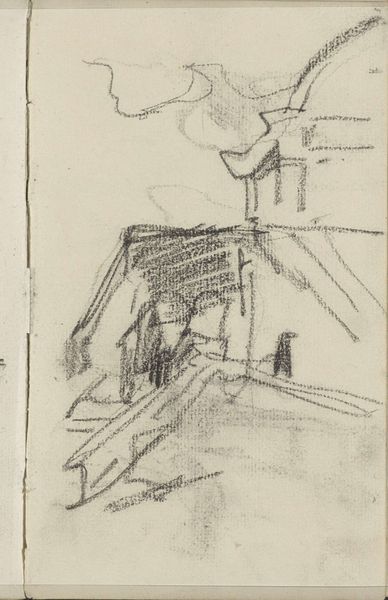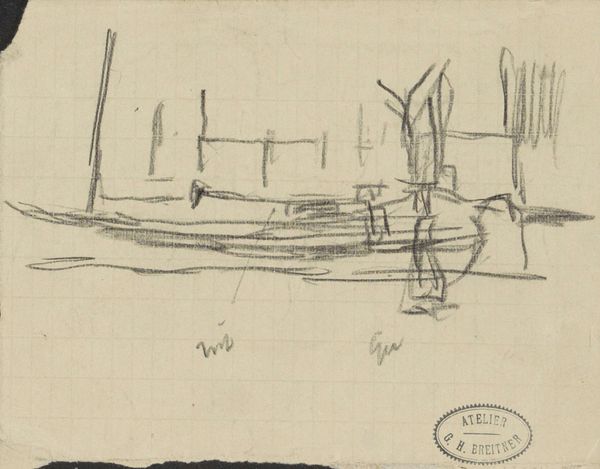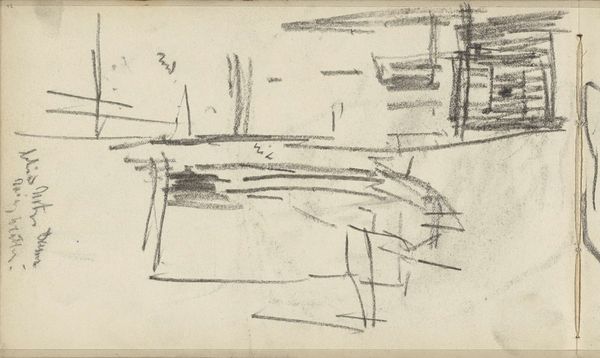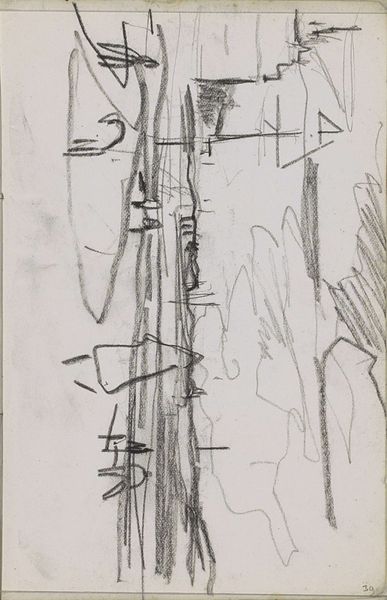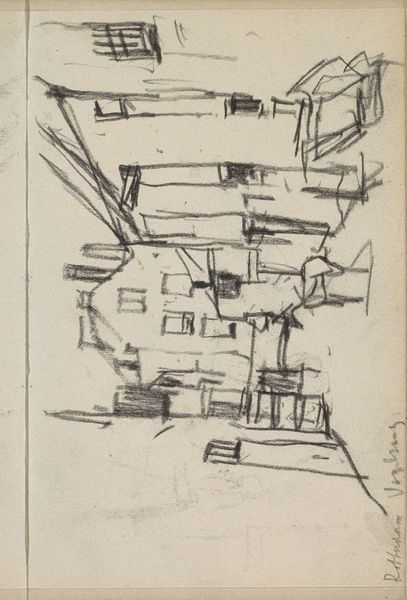
drawing, pencil
#
drawing
#
dutch-golden-age
#
impressionism
#
landscape
#
form
#
pencil
#
horse
#
street
Dimensions: height 114 mm, width 191 mm
Copyright: Rijks Museum: Open Domain
Editor: Here we have "Paarden op straat," or "Horses on the Street," a pencil drawing by George Hendrik Breitner, made sometime between 1873 and 1886. It's such a rapid sketch, almost abstract. What strikes you about the composition? Curator: Indeed, the drawing's value lies primarily in its demonstration of form. Consider the interplay of lines, their direction and weight. Note how Breitner uses hatching to define volume, albeit minimally, suggesting the mass of the horses and the rudimentary structure of the buildings. Do you perceive any hierarchy within these visual elements? Editor: I notice the darker marks clustered around the horses on the left, making them the focal point despite the equal distribution of the lines across the paper. It feels like Breitner was capturing a fleeting moment. Curator: Precisely. It embodies the essence of impressionism through its attention to form and the capturing of immediacy. Observe, for instance, the sparseness of detail. It prioritizes the suggestive power of line over descriptive accuracy. How does that affect your interpretation? Editor: It makes me appreciate the raw energy of the piece, how much information he conveys with so little. Curator: And isn't that economy of line itself a significant formal element, shaping our experience and understanding of the depicted scene? The semiotic weight is not in the precision of the forms but rather in their suggestive, almost gestural nature. Editor: That’s fascinating! I came in thinking it was a simple sketch, but now I see how carefully Breitner considered line and form to capture the scene. Curator: Precisely. The piece is not simply a representation but a formal exercise, prompting reflection on how basic visual elements communicate experience.
Comments
No comments
Be the first to comment and join the conversation on the ultimate creative platform.
